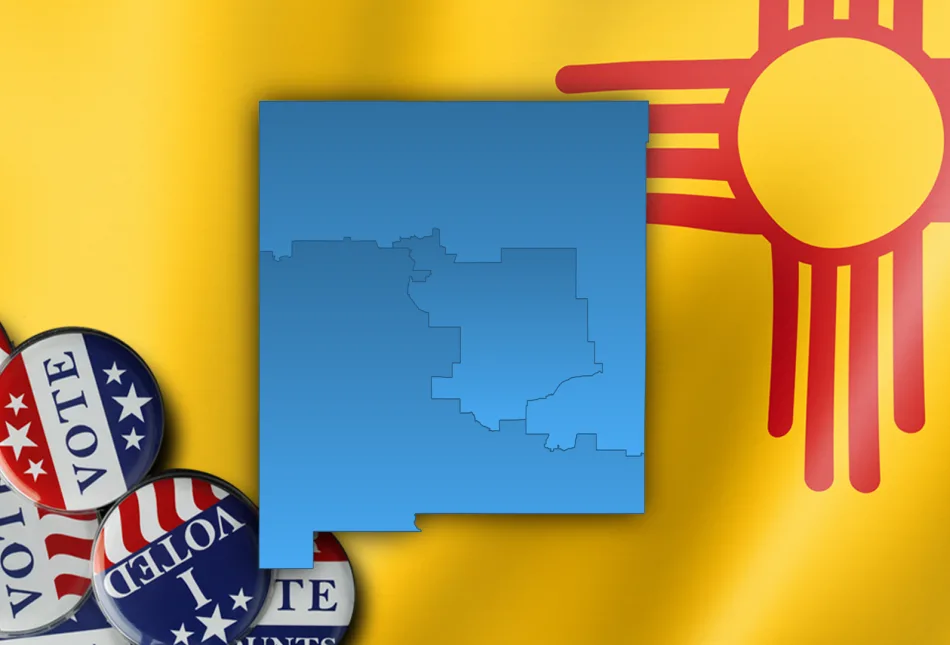Several questions for NM’s Blue Majority (and one for the Red Minority)


The following article appeared in Las Cruces Sun-News on November 27, 2022.
This Election Day a majority of New Mexico voters seemingly ignored the State’s manifest failures of governance. Instead, voters prioritized abortion rights while penalizing anyone who could plausibly be painted as “election deniers.”
Thus, New Mexico, one of America’s “bluest” states for decades, became even more Democrat dominant. Democrats now control every office of significance in State government as well as all five seats in Congress.
Whether the results are a sign of satisfaction with the status quo or just animus towards Republicans, the fact is that New Mexico’s governing Democrats faces serious challenges. Here are some that need to be addressed in the next few months:
- PNM (the State’s largest utility) has repeatedly expressed concerns about having enough electricity during the summer of 2022. The San Juan Generating Station coal plant was allowed to continue operating for an additional three months during this past summer due to fears of blackouts and brownouts. That will not be an option next summer. In fact, there has been little improvement in New Mexico’s electricity supply situation since then. What will the Gov., her new PRC, and the Legislature do to keep the lights on for New Mexicans? Waiting until the heat of next summer is not an option. Decisions need to be made right away.
- Speaking of the PRC, the Gov. now has a chance to mold New Mexico’s powerful regulatory body into something of her choosing. Will she prioritize geographical and ideological diversity or make the body a rubber stamp for her California-style policies? And, will they push through the Avangrid/PNM merger (rejected by the elected PRC but supported by the Gov.) as one of their first acts?
- New Mexico is one of just 11 states still in a COVID 19 emergency. It has been in a an “emergency” since March of 2020 (more than 2.5 years at this point). Will the new Legislature demand a “seat at the table” or continue to allow the Gov. to keep control until she sees fit? What does this mean for “democracy?”
- Voters approved Amendment 1 which taps into New Mexico’s permanent fund to boost education spending. With an expected $2.5 billion surplus, education spending is likely to rise even further. The State’s recent NAEP scores placed New Mexico at the very bottom across all four grade levels and subjects tested. Will New Mexico simply continue increasing education spending or will needed reforms be enacted?
- Speaking of that budget surplus, the Gov. and Legislature undertook a series of tax cuts in the 2022 session in anticipation of the election. Can New Mexico taxpayers expect further tax relief? If so, will those tax cuts be superficial, or will they address the State’s knotty economic challenges like “pyramiding” of the gross receipts tax?
Most of these questions are for New Mexico’s (even more) ascendent Democrat majority, but there is one question for the GOP: what can be done to boost voter turnout (and overall political engagement) in New Mexico’s most conservative areas? Overall voter turnout was 52 percent. In liberal Santa Fe County that number was over 63 percent. But, in conservative bastions like Lea, Eddy, Chaves, San Juan, Otero, Curry, and Roosevelt counties, turnout lagged the statewide average, sometimes by double-digit margins.
Many conservatives feel like their vote doesn’t make a difference either due to the State’s “blue” status or allegations of election fraud. Either way, New Mexico’s GOP must figure out how to engage its base through grassroots activism to become relevant.
No matter which side of the aisle you’re on, New Mexicans of all political stripes face more questions than answers.
Paul Gessing is president of New Mexico’s Rio Grande Foundation. The Rio Grande Foundation is an independent, nonpartisan, tax-exempt research and educational organization dedicated to promoting prosperity for New Mexico based on principles of limited government, economic freedom and individual responsibility
